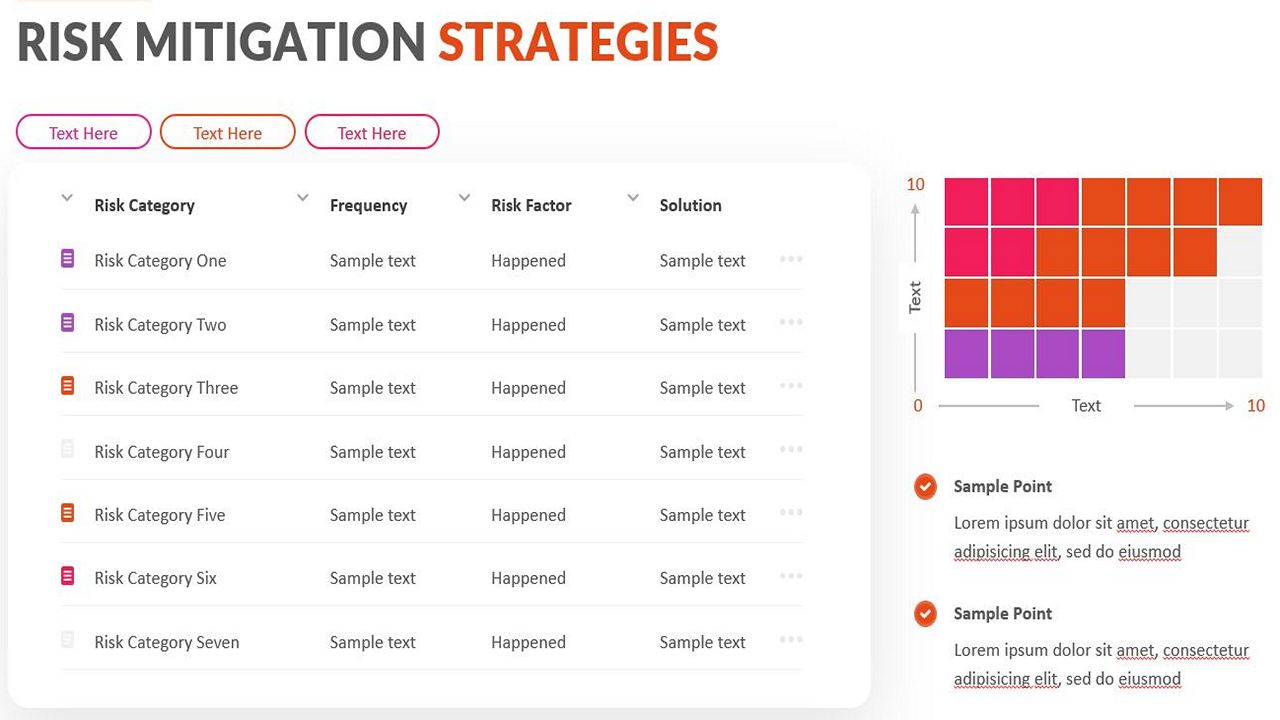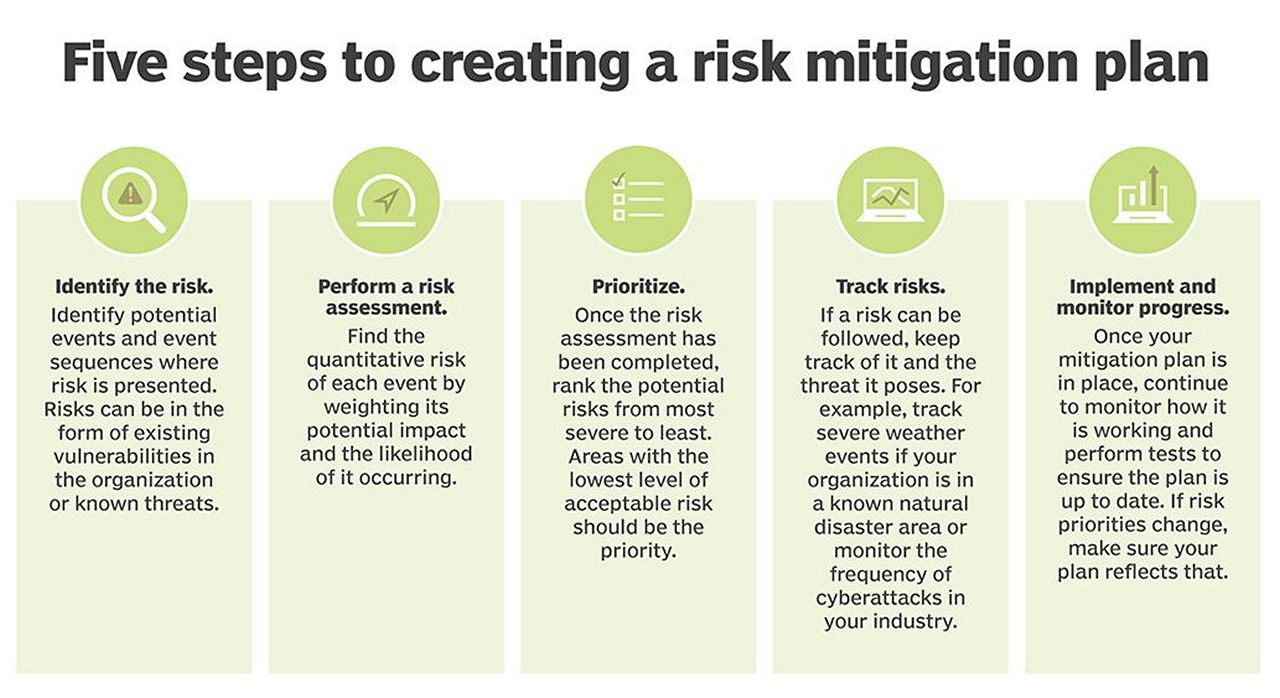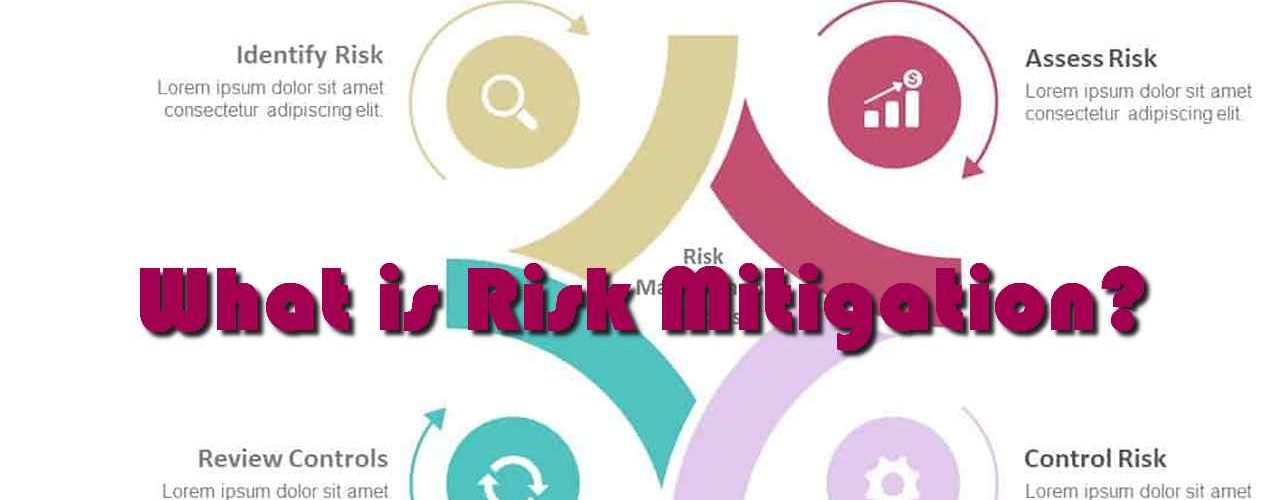Risk mitigation is the process of identifying a threat an organization may be facing and coming up with a means to reduce the effects of the risk and reducing the likelihood of its occurrence again.
The reason why companies and organizations mitigate risks is to eliminate the long-term effects of a hazard, encourage a findings report, come up with a tool to protect oneself against bodily harm, and reviewing community goals set for the general wellbeing.

Types of risks
A risk is simply defined as the likelihood of something bad happening.
Certain
This is a more than 90% chance that something bad will happen. Such situations include the likelihood of a landslide to crush houses at the bottom of a mountain during heavy rains.
Likely
Here, the percentage ranges from 50% to 90%. Chances of a risk happening are not as high, but they are likely to happen. For example, if a company invests in fluctuating shares, there is a likelihood that the company will either earn more dividends or not.
Moderate
The chances of this risk occurring are very low. Around 10% to 50%. For example, if a bright student who has been reading falls sick days before the exam, the likelihood of him or her failing is moderate.
Unlikely
The chances of a risk occurring here are 3% to 10%.
Rare
The occurrence of something bad is very low. This is the lowest type of risk, and it rarely takes place. For example, the likelihood of an ambulance to cause an accident when carrying a patient.
Types of risk mitigation strategies

Risk avoidance
It involves coming up with all means to avoid the occurrence of a risk. This method entails careful analysis of the likelihood of something bad happening and forming a way to avoid its occurrence.
Acceptance
Involves embracing the fact that risk has happened and coming up with a means of mitigating the occurrence of the risk again.
Transference
It implies working out a means of avoiding the risk at the moment and taking it to a place to be faced later or where there are better mitigation strategies relating to the situation.
Limitation
Also known as reduction. This strategy involves limiting the occurrence of a risk and the likelihood of something bad happening.
Steps of creating a risk mitigation plan

Identify a risk
Here, an audit team evaluates the situation at hand and finds out the risk at hand.
Perform a risk assessment
This process involves weighing all the available evidence to find what caused the occurrence of a risk.
Prioritize
Involves finding a risk that needs more attention compared to the occurrence of another risk.
Track risks
Entails monitoring how risks occur and knowing the likelihood of another occurring.
Implementation and progress monitoring
Here, a mitigation plan is put in place and implemented. Afterward, an assessment is conducted to find out if the mitigation plan has worked.
In conclusion, it is important to be aware of types of risk mitigation strategies and come up with a way to prevent a risk from occurring and repeating itself.


